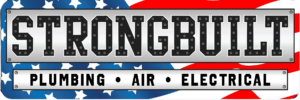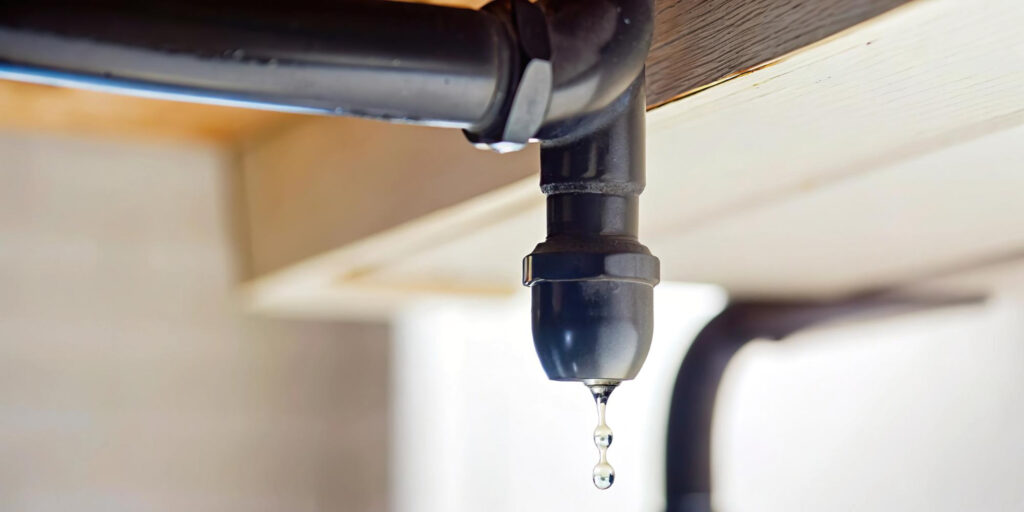Every homeowner dreads the idea of a hidden plumbing leak creeping behind the walls or under the foundation. Leaks are notorious for causing mold growth, higher water bills, and even structural damage. Fortunately, you can catch these sneaky water wasters early—with the right steps and a little know-how.
This guide will help you spot the telltale signs of hidden leaks, walk you through simple do-it-yourself fixes, and explain when it’s time to bring in a plumber. Plus, you’ll get tips on proactive maintenance to keep your home dry and worry-free.
Why Bother Detecting Hidden Leaks?
Small leaks don’t just waste water; they chew away at your home’s structure, health, and even resale value. According to the EPA, household leaks waste nearly 1 trillion gallons of water nationwide each year. Left unchecked, a leaky pipe tucked out of sight can:
- Rot wood framing and drywall
- Trigger harmful mold and mildew
- Cause foundation cracks or slab shifts
- Spike your monthly water bills
Early detection and repair can save you thousands in repair costs and give you peace of mind.
Top Signs That Point to a Hidden Leak
Some leaks make themselves known with puddles in the kitchen or a dripping ceiling. The rest lurk behind walls, under floors, or beneath your yard. Here are the most reliable red flags to watch for:
1. Unexplained Jumps in Water Bills
If your water bill suddenly jumps without a clear reason, you might have a leak. Compare your water use month-to-month and check for spikes that don’t line up with your normal habits.
2. Changes in Water Pressure
A sharp drop in water pressure, especially at one or two fixtures, could mean a supply line leak. If the water pressure is low across all faucets, the issue may lie in your main supply line or just outside it.
3. Mold, Mildew, and Musty Odors
If you spot stubborn patches of mold or catch musty smells that don’t go away with cleaning, excess moisture is likely hiding in the walls. According to mold remediation experts, mold growth can start growing within 24-48 hours in the right conditions.
4. Water Stains or Discoloration
Look for yellow, brown, or dark stains along ceilings, walls, or floors. Peeling, bubbling paint, or sagging drywall are visual clues that water is collecting where it shouldn’t.
5. Unusual Sounds
Hear consistent dripping, trickling, or gurgling in the walls—even when fixtures are off? That sound could mean water is escaping within your plumbing or inside your foundation.
6. Running Meter
This simple test can help reveal whether water is escaping somewhere in your plumbing system—even if you can’t see it.
- Turn off all water use inside and outside (faucets, showers, appliances, and irrigation systems). Don’t flush toilets or run anything during the test.
- Check your water meter. Look for the numbers on the dial or digital display, and watch for a small triangle or spinning dial that can show that water is flowing, even from a very slow or hidden leak.
- Wait 30–60 minutes. Recheck the meter.
- If the numbers have changed—or the leak indicator moved—it’s likely there’s a hidden leak somewhere in the plumbing.
7. Soft Spots and Warped Materials
Spongy sections of drywall, flooring, or baseboards hint that water has been sneaking in. Watch for spots that feel unusually cool, sag, or crumble under gentle pressure.
8. Outdoor Surprises
Sudden patches of thick green grass, muddy soil, or puddles in your yard can signal an underground leak. If you notice sewage smells or lush plant growth above your sewer line, schedule an inspection or a sewer repair right away.
9. Foundation Issues
Cracks in walls, flooring, or the foundation itself can result from prolonged slab or underground leaks. Shifting foundations may eventually impact your whole home’s stability.
DIY Leak Detection and Easy Fixes
Not every leak requires a plumber right away. Here are some detection tricks and repairs you can try on your own—as long as you feel comfortable and there’s no risk of damage or water near any outlets, wiring, or appliances.
Inspect Exposed Pipes and Fixtures
- Check under sinks, behind toilets, and around the water heater for active drips or signs of corrosion.
- Tighten loose fittings with an adjustable wrench. Sometimes, a ¼ turn is all it takes. Avoid overtightening, which can crack fittings or strip threads.
- Replace worn washers in faucets or hose bibs if the dripping continues.
- Examine appliance hoses (washer, dishwasher, fridge) for cracks, bulges, or stiffness, and replace them as needed.
Dye Test Toilets
Toilet leaks are silent water wasters. Although sometimes you may hear hissing sounds or the sounds of bubbling water, toilets can waste a surprising amount of water without making noise or obvious signs.
- Add a few drops of food coloring to the toilet tank water.
- Wait 30 minutes; don’t flush the toilet.
- If colored water appears in the toilet bowl, it means water is leaking past the flapper or fill valve into the bowl.
- This likely means the flapper or fill valve needs replacing to stop the leak.
Fix Small Faucet Leaks
A leaky faucet usually points to a worn-out washer, O-ring, or interior seal.
- First, shut off the water supply valves under the sink.
- Open the faucet to drain any remaining water.
- Remove the faucet handle and stem carefully. Inspect washers, O-rings, and seals for wear or damage, and replace any that are worn with matching parts from your local hardware store. Bringing the old parts with you helps make sure you get the right replacements, and store staff can provide expert advice if needed. Reassemble the faucet. Avoid overtightening parts during reassembly, which can cause damage or new leaks.
- Turn the water back on, and check if the leak has stopped. If the leak persists, contact a professional plumber for a though inspection.
Temporary Pipe Repair: What Works and What Doesn’t
If you find a small leak, a quick temporary fix can help stop water damage until a professional plumber can make a permanent repair. But not all repair methods work the same, and using the wrong one might not stop the leak—or could make things worse.
- Plumber’s Tape (Teflon or PTFE Tape): This thin tape is made to seal the threaded connections where pipes screw together; it cannot fix cracks or holes in the pipe itself. Wrapping plumber’s tape around a crack won’t stop water from leaking and may even make the leak worse.
- Pipe Repair Clamps: These clamps typically include a built-in rubber gasket that presses against the pipe to seal small holes or cracks. They’re most effective on metal pipes or certain types of plastic pipes that can handle the pressure of a clamp without bending or cracking.
- Epoxy Putty: This moldable putty sticks to wet or dry pipe surfaces and hardens into a solid patch. It can temporarily seal small, low-pressure leaks.
- Self-Fusing Silicone Tape: This stretchy tape bonds to itself, creating a waterproof seal when wrapped tightly around the leak area. It works best on clean, dry surfaces and can handle temporary emergency repairs on many pipe materials.
It’s important to note that these quick fixes are only suitable for very minor leaks and should never be used on pressurized main lines or pipes with serious damage. A licensed plumber should still inspect the issue and complete a permanent repair.
Check Your Water Meter
See above for the running meter test. If you spot steady movement while water is off in the home, a hidden leak is almost certain.
Assess Humidity and Condensation
- Run a portable dehumidifier in affected rooms and monitor for recurring dampness.
- Use your home’s exhaust fans after showers and cooking to combat extra moisture.
When to DIY vs When to Call a Pro
Some issues should always be handled by licensed plumbing professionals. If you notice any of the following, stop and call a plumber right away:
- Water stains on ceilings or walls, especially with active drips
- Persistent mold or mildew that keeps coming back after cleaning
- Foundation cracks or visible slab shifting
- Sewage odors or yard flooding above waste lines
- Outdoor soft spots or unexplained lush growth patterns in your landscape
- Rapid increase in water bills with no visible source
A professional plumber uses specialized leak detection equipment, including thermal imaging and acoustic sensors, to pinpoint leaks quickly without destroying walls or floors. They can also check water quality to rule out contamination and repair pipes safely, keeping your plumbing code-compliant and your home protected.
Preventative Plumbing Upkeep
The best medicine is always prevention. Here’s how to keep your plumbing system in fighting shape:
- Schedule annual plumbing inspections. Detect slow leaks before they turn into costly repairs.
- Replace aging hoses and washing machine lines every 5 years or sooner if you notice brittleness.
- Install water leak detectors. These battery-operated or smart sensors fit under sinks or near key appliances and send alerts if moisture is detected.
- Watch your water pressure. Too much pressure puts stress on pipes and raises the chance of leaks. Aim to stay between 40 and 60 psi.
- Don’t ignore slow drains or minor drip sounds. Early attention can prevent big headaches later.
Partner with Strongbuilt for Serious Leak Solutions
When you spot a leak that you can’t fix on your own, or if you want the peace of mind that comes with a professional inspection, reach out to Strongbuilt Plumbing, Air, Electrical. Our trained team has the tools, knowledge, and experience to find even the most stubborn hidden leaks, repair plumbing damage, and keep your home healthy.
With prompt service, transparent communication, and quality workmanship, you can count on Strongbuilt to protect your home and restore your comfort. We’re here for emergencies and everyday maintenance alike.
Contact us today to schedule your plumbing inspection or repair. Don’t wait for a little drip to turn into a big disaster!


